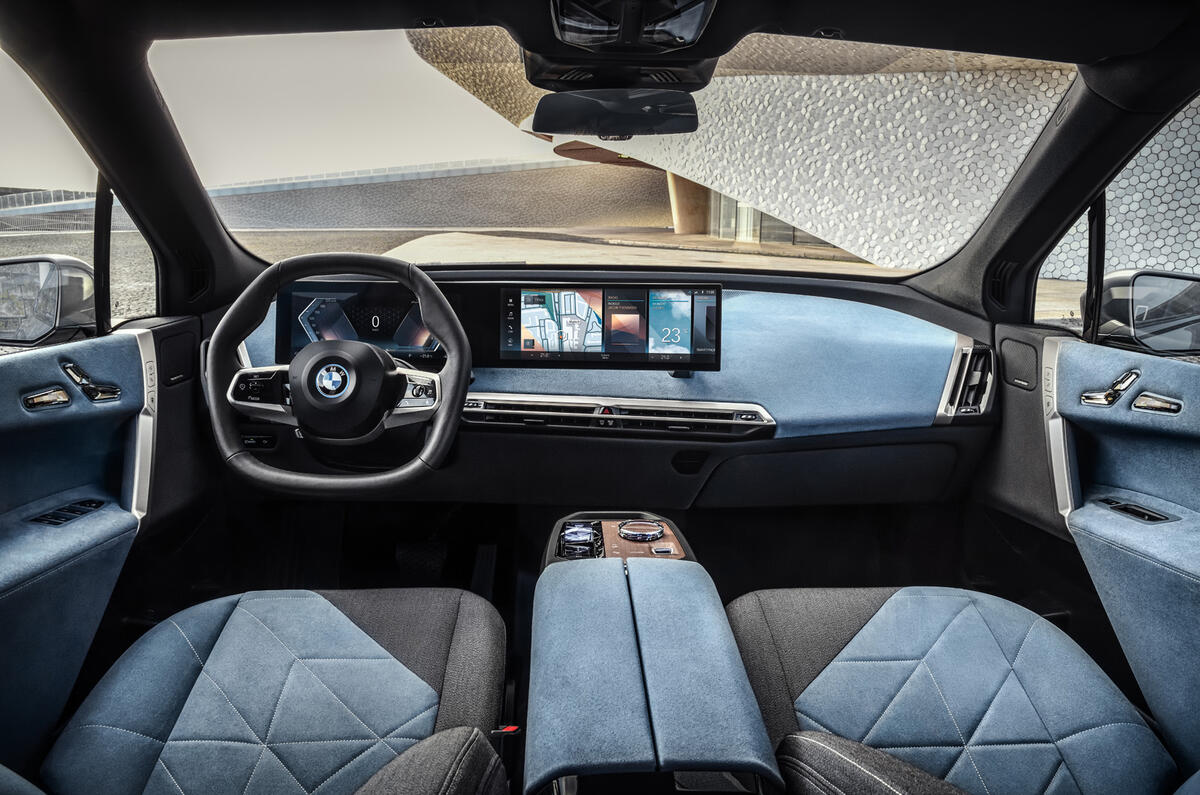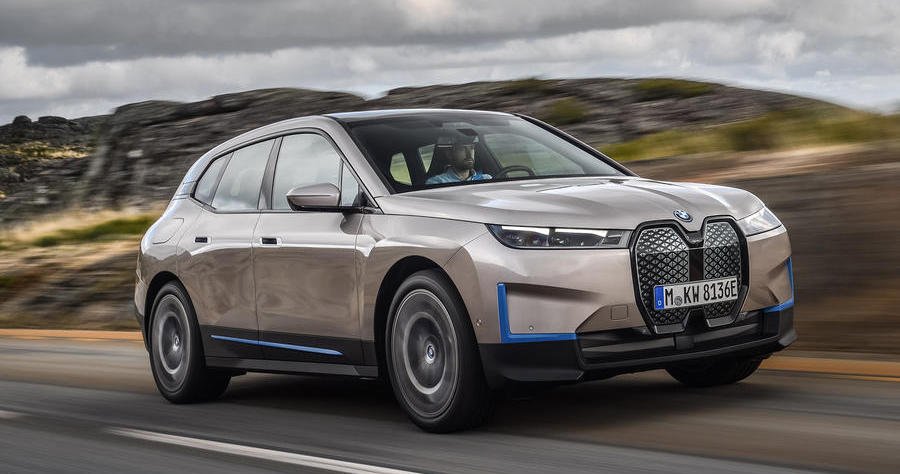BMW's bold new electric iX SUV, revealed today in near-production form, will serve as the firm's "technology flagship" when it goes on sale late next year.
The five-seat SUV, which was previewed by the Vision iNext concept, will offer up to 500bhp from two electric motors that drive all four wheels. According to BMW's R&D boss, Frank Weber, it will have a 0-62mph time of less than five seconds and a range of more than 373 miles.
The iX is BMW's second dedicated fully-electric production model after the seven-year-old i3. Weber said the iX nameplate was chosen to signify the new model's position at the top of the electric i line-up and its role in showcasing technology: it uses the new fifth-generation version of BMW's electric drive system, and also offers high levels of autonomous and connected technology. The iX will take on the likes of the Audi e-tron quattro and Mercedes-Benz EQC, as well as offerings from EV-only firms such as the Tesla Model S and Nio ES8.
Weber said that, while broadly similar in size to the X5 externally, the interior of the iX "offers accommodation and load-carrying space comparable to the X7", thanks to the electric platform, which makes extensive use of carbon fibre in its construction.
The iX, developed under the internal codename i20, is a departure from BMW's previously announced plan to base future electric models on the same platforms as its existing petrol, diesel and plug-in hybrid cars. It uses a new aluminium spaceframe that supports an inner carbon fibre reinforced plastic (CFRP) structure, and a body made out of a combination of aluminium, composite plastic and CFRP.
Weber said the platform is described by Weber a "totally new development", though he says it is "highly compatible" with the CLAR platform used for the likes of the 3 Series and X5, suggesting key elements of its engineering will be used by other new BMW i sub-brand models in the future. This shared chassis componentry is key to allowing BMW to produce the iX alongside the 5, 6, 7 and 8 Series at its Dingolfing factory in Germany.
The iX adapts the controversial design of the iNext concept in 2018, with a large blanked off grille, largely unadorned flanks, frameless doors, fixed B-pillars, and tapered glasshouse. Without the need for a front radiator, the large grille houses the cameras, radar and sensors needed for the driver assistance systems.
For the first time in a modern BMW model, the iX will feature a fixed clamshell-style bonnet. "Without a traditional engine or frunk [front trunk], there is no need for customers to open the bonnet," said BMW design boss, Domagoj Dukec. The windscreen washer bottle is accessed via the BMW emblem above the grille. BMW's traditional corona light graphic has been replaced by a quartet of light bands in the upper part of the slim headlamp assemblies. Full-LED lights are standard, though buyers will also be able to specify Laser lights as an option.
Aerodynamic developments, including minimal air ducting within the front bumper, flat underbody panelling, integrated door handles and the tapered glasshouse, contribute to a claimed drag coefficient of 0.25. Buyers will be able to order the iX in both standard and M Sport styling – the latter with a more heavily structured front bumper.
With wheel houses similar in size to the X7, it will offer up to 22-inch aerodynamically optimised rims and 275/40 profile rubber.
BMW is yet to reveal details of the variants it has planned beyond the range-topping four-wheel-drive twin motor version. The individual outputs of the two electric motors, which retain full power up to their peak revs, remain under wraps for now, though Weber indicated the rear will be the more powerful of the two: "We've engineered the drivetrain to support between 90kW (121bhp) and 300kW (402bhp) per axle, front and rear."
The iX sends power to all four wheels; while the drive split hasn't been specified it is expected to feature a typical rear bias. Top speed is above 124mph. The iX will be offered with different battery options with a "100kWh plus" unit fitted to the range-topping model. With a claimed average power consumption of 21.0kWh per 100km, that model will offer a range of more than 373 miles, compared to 286 miles offered by the iX3's lithium-ion battery. Despite the extensive use of aluminium and carbon fibre, the large battery means the iX weighs what Weber described "as a good 2.5 tons".
The new charging system employed by the iX enables optional DC fast charging at up to 200kW, allowing the battery to be charged from 10 to 80 per cent in under 40 minutes. The standard charger operates at 11kW, which provides the same 10 to 80 per cent charge in 11 hours on a wallbox feed.
Underpinning the new BMW is an aluminium-intensive chassis featuring a double-wishbone (front) and multi-link (rear) suspension, offering active rear-wheel steering.
BMW is readying a comprehensive range of connectivity and sensor functions. "The iX has more computing power for data processing than the newest models in our current line-up," said Weber. Included is over-the-air functionality via 5G and Level 3 autonomous driving technology.
The iX features a spacious interior with a flat floor and natural materials. It also uses recycled plastics, including a new microfibre fabric for the seats. Up front, there's a hexagonal multi-function steering wheel, with the instruments and infotainment functions grouped together in a lightly curved digital display panel connected to the dashboard on a plastic mount within a newly designed head-up display.
The centre console has been removed, with the controls, including a rocker to select the drive and a new version of BMW's iDrive rotary controller, set within the forward section of a high mounted armrest. Other controls are set within the upper part of the door trims. "It's not switchless but it has less switches [than current BMW models]. You still need a haptic experience," said Dukic.
There is no third-row seat option; BMW claims the less than three per cent take-up for the third row seat on the current X5 was key in this decision. Boot capacity will be similar to the 650 litres of the X5.
There have been no indications of a price for the iX, but as a high-tech flagship it is expected to command a premium over comparably sized models.
![]()
![]()
![]()

Nouvelles connexes



